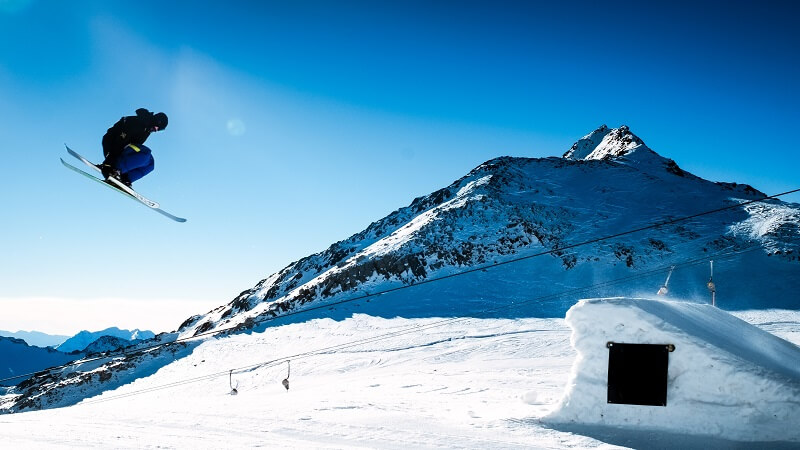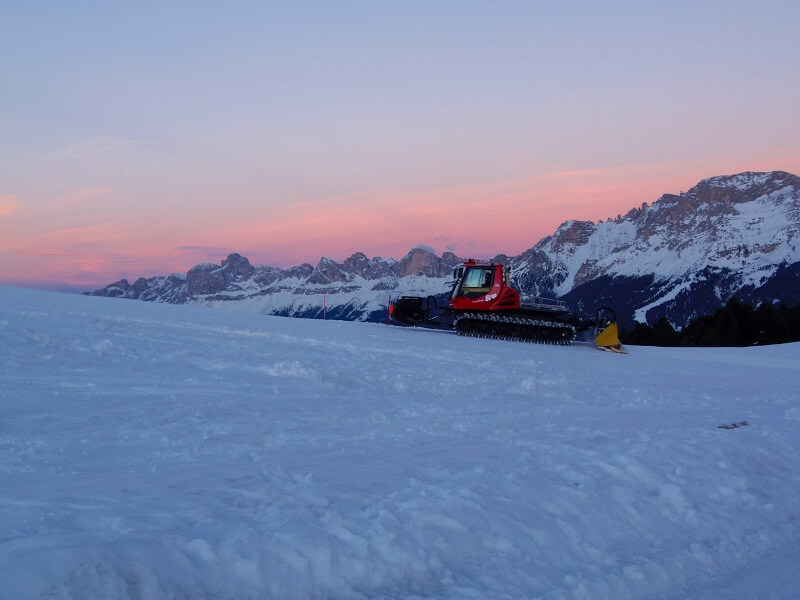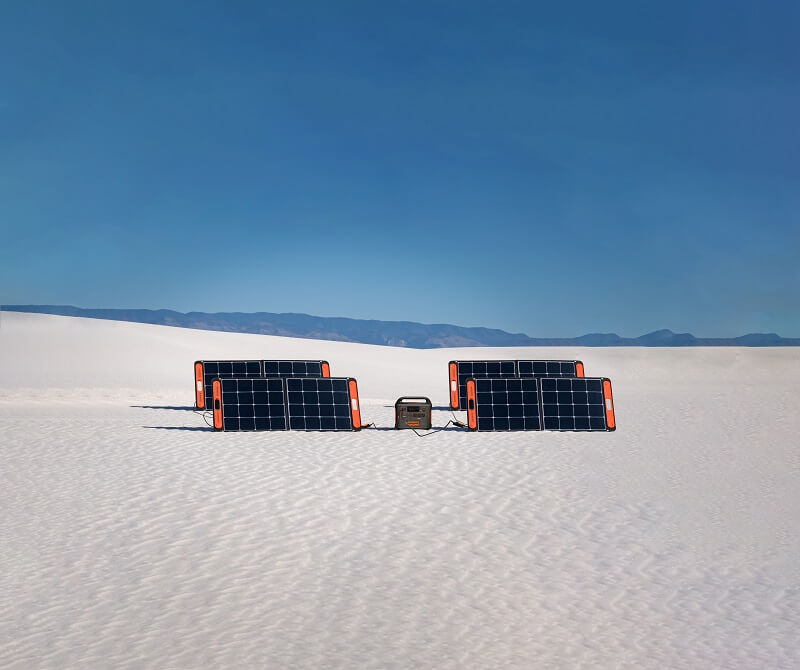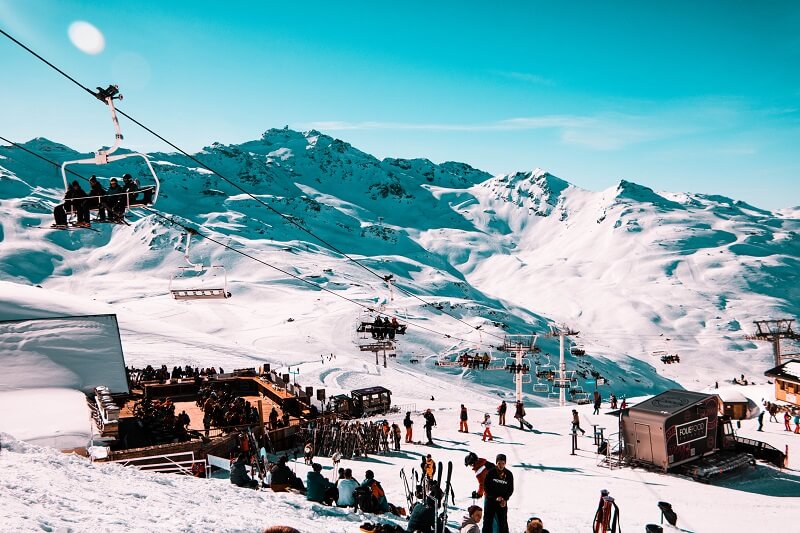Sustainable skiing – what does the future hold for our dream ski holidays when it comes to sustainability and longevity?
When you think of a skiing holiday, which words come to mind? Exciting? Freezing? Scary? How about the word ‘sustainable’? We all know that global warming is heating the Earth, we hear it on the news, we see it on social media, it’s everywhere. In the past few months, more and more climate protests have started to take place, from soup being thrown over famous artwork, to protesters scaling the Dartford crossing, to disruption at the Conservative Conference held by Liz Truss (remember her?).
But what does this all mean for those of us that love a ski holiday with friends and family, and also want to be conscious of our carbon footprint and impact on the environment? Are our snow-based holiday resorts sustainable, and if not, can they ever become it? National Geographic has said that if we continue at the current rate, there will be no snow in 100 years. There is a clear message – “Change or face a future without winter sports.”
At present, ski resorts are being impacted by climate change in several different ways, the most obvious of which is that with global warming heating the earth, snowfall is therefore decreasing, and the year-round snow in some locations is thawing at a much faster rate.
Here we review the positive measures that are being put in place to make ski resorts more sustainable and also highlight a few of the negative impacts that ski resorts can have on the environment to raise awareness. We also share insight into some of the most sustainable ski resorts to visit and share tips on how to make your winter sports break a sustainable one!

Negative impacts ski resorts are having on the environment:
In no particular order in terms of the true scale of their negative impact we have:
- Deforestation – To provide safety for skiers and snowboarders, speed up travel around the resort, and in some cases try to improve the look of the slopes, some ski resorts carry out deforestation. Often trees will need to be chopped down to create space for ski lifts and paths for winter sports enthusiasts. Deforestation impacts not only the environment by releasing carbon dioxide and other greenhouse gases, but also the local wildlife and their available food and shelter.
- Wildlife – As a continuation from the previous point, when you remove trees and other vital habitats from the environment, you not only damage the environment, but you also impact the animals that previously lived in these areas. For example, the removal of trees will restrict the available nesting areas for birds. In addition, ski lifts are unnatural moving objects in the sky that can scare birds away and, in some cases, even collide with them sometimes resulting in bird mortality.
- Energy usage – Possibly unbeknown to most holiday-goers, ski resorts have a huge amount of energy usage due to the running of ski lifts (which on average operating a ski lift for a month uses the same amount of energy as 3.8 households for a year). That being said, with the current energy crisis and increase in gas and electric costs, it is likely that many ski resorts will try to decrease their usage this ski season by slowing down the speed of ski lifts, or reducing the number of lights and Christmas decorations used – so something to be aware of!
- Fossil fuels – Maintaining the picturesque, safe, slopes also currently uses fossil fuels such as petrol/diesel as each resort will have a fleet of trail groomers who are in operation every single night, these use on average 5 gallons of diesel an hour. If we’re nit-picking, you could also argue that flying to these resorts from all over the world is also having an irreversible impact on climate change. Catching the Ski Train is an option that could help decrease the amount of emissions emitted, but we do appreciate that some popular ski destinations aren’t accessible by train!
- Water usage – With almost every ski resort being impacted by shorter winters as a result of climate change, this is reducing the amount of snow that falls and therefore leading to an increase in artificial snow usage. The volume of water required to create artificial snow is colossal, creating snow can use as much as 100 gallons of water per minute to produce snow. That’s 143 bathtubs of water an hour! Not to mention the amount of electricity required to help generate the water into snow!

Okay okay, we appreciate this has very quickly taken a negative approach, but this is all about to change, we promise. Here are some of the sustainable practices that ski resorts have already adopted, as well as some further changes that they will look to implement in the future:
Positive steps being taken by ski resorts to increase sustainability:
- Car-free resorts – Lots of resorts have been making the switch away from cars and replacing them with much more environmentally friendly alternatives such as electric buses to get people around the resort. Some resorts have even completely banned cars with Zermatt (Switzerland) only allowing access via train (see – the Ski Train really is a thing!). Other sustainable practices include e-vehicle and e-bicycle charging points being introduced throughout resorts, to encourage guests to use different methods of transportation.
- Solar-powered ski lifts – Any ski resorts that haven’t already made the switch to solar-powered ski lifts really need to get their act together. Most resorts that install new gondola/lift facilities will ensure that they are equipped with solar panels, and it’s no surprise, given that some of them have as many as 300 days of sunshine a year, practically generating their own electricity!
- Eco-friendly fuel – As we mentioned previously, trail groomers are very bad for the environment given their extortionate fuel usage, using on average 5 gallons of diesel an hour. However, some resorts have introduced eco-speed diesel to run their fleets which generates 11% less carbon monoxide. Wolf Creek (Colorado, USA) has even taken things to another planet in terms of sustainability, powering their trail groomers using only biodegradable grapeseed oil! See, things are on the turn!
- High-level recycling – We know, recycling doesn’t sound that state-of-the-art, we do it in our homes all of the time. But what about Zermatt (Switzerland) which repurposes its waste plastic and uses it to resurface roads and paths? How good is that? Other more mainstream practices that have been adopted include introducing drinking water fountains throughout resorts to minimise general plastic waste, and when plastic must be used, there are recycling stations located throughout.
- Conservation projects – Lots of ski resorts are also setting up conservation projects so that instead of removing trees and other vital habitats as we mentioned earlier, specific zones are being put in place to protect forests and wildlife sanctuaries, some of which are home to deer, marmots and alpine hares!
- Environmental experts – Finally, we have the introduction of environmental experts employed by ski resorts to oversee their construction work. This is a great step that is being taken because, rather than the more typical process where business decisions are made purely around customer experience, speed of completion, and ultimately, revenue generation, instead, we are moving into a time where the potential environmental impact of construction work is also being taken into consideration. This means that not only will winter sports holidays be an enjoyable experience, but a more sustainable one too!

So, what destinations are good to visit for a sustainable ski break?
If you’re looking for the most sustainable skiing holiday available currently, your best bet is the Zermatt Ski Resort, located in Zermatt, Switzerland. This resort is the crème de la crème when it comes to sustainable skiing. They’re leading the way having already adopted several of the sustainable practices mentioned above, including, solar powered ski lifts, car-free travel to the resort, electric buses to travel around the resort, eco-speed diesel used by their trail groomers, environmental experts overseeing construction work, repurposing plastic waste and introducing conservation projects. Yeah, they’ve done all that!
Other resorts such as Chamonix (France) have set a high (but hopefully achievable) goal of achieving carbon neutrality by 2037. Similar goals are being set across the pond with Big Sky Resort (Montana, USA) formally outlining a plan to achieve net-zero emissions by 2030 through the Forever Project.
Another very sustainable ski resort is Saas-Fee, Switzerland (are the Swiss good at this or what?). According to Natural Geographic, Saas-Fee is the first carbon-neutral municipality in the world. Their resort runs purely on hydropower and operates an e-car sharing service with emission-free ski buses to transport guests around the resort. Outside of Switzerland, we have Kitzsteinhorn/Maiskogel, located in Kaprun, Austria. Similar to Saas-Fee, the Kaprun resort operates its ski lifts using 100% ecologically generated energy and provides a free ski bus service around the resort.
Thankfully, it seems that most ski resorts are implementing new ways to become more sustainable in one way or another. So even if we haven’t mentioned your favourite ski destination above, it’s likely that they’re also coming up with new ways to give winter sports enthusiasts are fun and sustainable holiday.

What can you do to help make your break more sustainable?
There are a few things you can do to make your trip more sustainable, for example, take the train rather than the plane. We’ve found an amazing website called Snow Carbon which provides railway/ski packages that reduce carbon emissions by up to 90% in comparison to flying. Did you know, Eurostar claims that their trains produce 93% less CO₂ per passenger than planes, and their trains are 100% electric, using electricity mostly produced by wind power?
Next up is your equipment and clothing. We get it, you’re going on your first-ever winter sports trip so you want loads of brand-new gear to ensure that you look and feel like king/queen of the slopes. But how sustainable is this? If it’s your first time going skiing, why not buy/rent some second-hand gear? It will cost you a fraction of the price that you’d pay for brand-new clothing/equipment and you’ll be reducing waste at the same time. One company you can bag yourself some sustainable ski gear from is Eco Ski.
If you’re an avid winter sports enthusiast and go on lots of these trips then you probably already know just how expensive the equipment/clothing can be, especially if you are buying new stuff for every trip. So, why not try and maximise the life of your items? If you’ve got good quality equipment/clothing then it should last for a while anyway, and if it does tear/break, rather than throwing it away, you could check to see if the manufacturer can help you out. We love the fact that Patagonia provides guides on how to repair your items yourself and if you can’t, they’ll repair them for you. Find out more here.
If you’ve worn out your gear as much as you’d willingly like to, rather than binning it, why not donate it? Donating still gets rid of your stuff (just like binning it) but you’ll get the added benefits of feeling good and helping out the environment. You can donate to Disability Snowsport here, as an example.
Finally, if you are looking to go away on a sustainable winter sports trip, then make sure you do some digging ahead of booking to see what the resort is doing in terms of sustainability and environmentally friendly practices. If you find one that you love let us know on Instagram here: @Dogtag_insurance!
On a lasting note, the issues we have discussed in this article may cause disruption in future winter sports holidays, which is why it is so important that you protect your trip with adequate travel insurance, such as a Dogtag policy. With cover including £200 compensation (up to a maximum of £1,000) for every 24 hours you are unable to ski or snowboard due to resort closure and so much more, we’ve got you covered, should your trip be disrupted.
